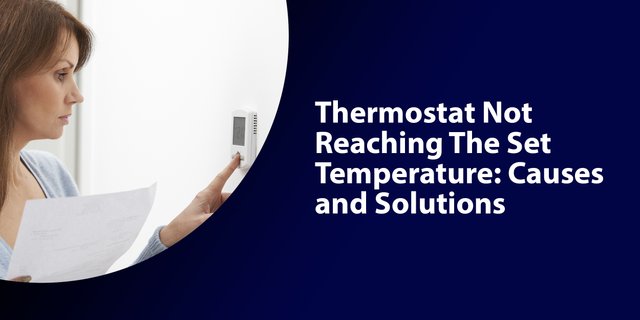Thermostat Not Reaching the Set Temperature: Causes and Solutions
Does the number displayed on your thermostat's screen do not match what you feel indoors? This problem is actually more common than you think and can be fixed with ease. But depending on what caused the trouble, there may be a need to call in a professional A/C repair technician in Advance, NC!.
Here are some of the typical reasons a thermostat can't reach the temperature you set and a few troubleshooting tips.
The thermostat is not properly calibrated.
A thermostat needs to be calibrated correctly to make accurate indoor temperature readings. But due to many reasons, like old age or bad batteries, the calibration may be off. When that happens, the temperature displayed on the thermostat's screen may be lower or higher than the actual room temperature. Therefore, the numbers may not match how you feel.
Solution: Recalibrate the thermostat.
The thermostat is frozen.
Most modern thermostats are at risk of being frozen. The touch screen may freeze when there's a snap of static electricity near the device, or there's a power surge in your electrical system. When a thermostat is frozen, the data shown on the screen won't update anymore. And your unit won't receive any commands and function as you want it to.
Solution: Update the firmware. Try force booting the thermostat and see if it resets and automatically install the update. If it's not an option, check the manual to see if there are any instructions on how to solve this problem. If none are apparent, contact an A/C repair technician in Advance, NC.
The thermostat is not level.
Proper leveling is very important for older thermostats, specifically those that measure temperature using a mercury tube. Once the thermostat is on a wall at an angle, the device won't measure temperatures accurately or may not work at all.
Solution: Level the device. If the thermostat uses mercury, which is poisonous, it's best to replace it for you and your family's safety. Newer thermostats function no matter how far off of the level they are installed.
There are problems with the wiring.
A thermostat has cables with solid copper wires that can break if flexed too often. Also, cables may break if the installer puts too much pressure stapling the cable or the staple has been misaligned. It is also possible for the current not to pass through the wiring if it is caked with lint or has corroded. If you have installed the thermostat yourself or hired an amateur for the task, the wires may be connected to the wrong terminals. Any problem with the wiring can cause thermostat issues.
Solution: Contact your local A/C repair technician in Advance, NC for a proper diagnosis and reliable fix.
The thermostat's interior component is caked with dirt.
Dirt and dust can accumulate inside your thermostat over time. When that happens, and the build-up is left uncleaned, the thermostat will likely misread the temperature or even stop responding. So your cooling system won't be able to cool the room to your desired temperature.
Solution: Get rid of the dirt and dust build-up. Remove its cover and use a very soft brush to gently remove dirt and dust between lever switches or contact points. Make sure not to touch the interior components with your finger. If you're not confident, ask an HVAC technician if they can help you with it.
In some instances, the problem that keeps the thermostat from reaching the set temperature isn't in the device but in the cooling system itself. Some of the issues include clogged filters and fan blades and dirty or frozen coils.
Given the wide range of issues that can prevent the thermostat from functioning properly, it's best to contact a trusted A/C repair technician in Advance, NC. A qualified cooling system repair tech is likely to figure out the problem and provide a solution fast. Therefore, the numbers displayed on the thermostat's screen will finally match what you feel.
If you need an A/C repair in Advance, NC, feel free to contact All About Care Heating & Air! at 336-771-9000.

Newer thermostats function no matter how far off of the level they are installed.